Search Results for: Glycemic,
Glycemic Index And Your Quick Weight Loss
I feel once you are adding food back into your plan after HCG using the Glycemic Index can help
Glycemic Index And Your Quick Weight Loss
by Kevin DiDonato MS, CSCS, CES
Diabetics learned long ago the secret to maintaining a healthy blood sugar. Monitoring the glycemic index, exercise, and medications can help to maintain a healthy blood sugar. Fitness enthusiasts are now starting to delve a little more into the wonderful world of stable blood sugar as a way to lose weight without yo-yo dieting, which can cause mood swings and other things.
People are not resorting to medications, but are using the glycemic index and glycemic load of food as a way to balance not only their diet, but also their blood sugar.
Everyday people, bodybuilders, and athletes are turning more to the glycemic index of food and the new science of nutrition timing as ways to boost weight loss results and athletic performance. The proper timeframes for the body to process nutrients and balancing the amount of carbohydrates, proteins, and fat will help with optimal results.
Even with nutrition timing, glycemic load, and glycemic index, there is still a large amount of confusion as to what each one is and how they affect the body.
Glycemic Index:
The End of Diabetes: The Eat to Live Plan to Prevent and Reverse Diabetes
When we eat carbohydrates, there is a rise in blood sugar. This rise is also associated with the pancreas reacting, causing a release of insulin in the blood stream to shuttle that sugar into the working muscles. This response of the body is automated depending on how much sugar is in the blood. This is where the glycemic index comes in. Carbohydrates are categorized according to how fast or slow the blood sugar rises in the body.

Foods rich in carbohydrates usually have an associated tag with them, which is the glycemic index. There are three indexes that are classified in the index: High, Medium, and Low. High indexed foods will digest quickly and have a fast absorption rate, leading to a sharp rise in blood sugar and resulting in a dual response of the pancreas, releasing a large amount of insulin.
On the opposite spectrum, a food classified as a low-glycemic indexed food will digest and absorb slower, resulting in a much slower rise in blood sugar, resulting in a slower release of insulin in the body. This concept was originally developed as a way to help diabetic patients monitor the types of foods that they were eating, and maintaining a more stable blood sugar response.
Glycemic Load
You may hear the terms glycemic load and glycemic index used in the same sentence. The glycemic load of food utilizes the glycemic index and the portion of carbohydrates to determine how the body will react.
For example, you take in a food that is high in the glycemic index, but a small portion of that. There would be a subsequent release in the blood of sugar and insulin.
With the glycemic load, you might have the same response to a much bigger portion of a lower glycemic indexed food as you did with the small, high glycemic indexed food.
Low Glycemic Foods and Weight Loss
Maintaining a diet of food with a low glycemic index has been shown beneficial in a number of different areas. In the study by Thomas et al, they determined that a diet rich in foods that have a low glycemic index resulted in higher weight loss, lower BMI, lower total fat mass, and a change in reduction in total and LDL cholesterol.
In a similar study, but one involving overweight children, Spieth et al, concluded that a low glycemic diet helped reduce body weight and body mass index in overweight children. The study involved 107 obese children.
They used a low glycemic indexed diet and a low-fat diet. The results showed that children utilizing a low glycemic indexed diet lost an average of 3kg/m, giving stronger evidence that a low glycemic index diet might be beneficial to weight loss.
Research performed by Radulian et al, showed that low glycemic index diets also helped in rapid weight loss, decreasing in fasting glucose and insulin levels, reduction in triglyceride levels, and improvements in blood pressure.
These studies show some promising results, and more research should be done to continue to validate these alternatives.
References:
Spieth, LE. Harnish, JD. Lenders, CM. Raezer , LB. Pereira, MA. Hangen, SJ. Ludwig, DS. A low-glycemic index diet in the treatment of pediatric obesity. Pediatr Adolesc Med. 20100 Sep: 154(9)947-951.
Thomas D, Elliott EJ, Baur L. Low glycaemic index or low glycaemic load diets for overweight and obesity. Cochrane Database of Systematic Reviews 2007, Issue 3. Art. No.: CD005105. DOI: 10.1002/14651858.CD005105.pub2.
Campbell, B. Glycemic Load Vs. Glycemic Index. Paper. NSCA
Foster-Powell K, Holt S, and Brand-Miller J. International table of glycemic index and glycemic load values: 2002. American Journal of Clinical Nutrition, 76:5 – 56, 2002.
Radulian G, Rusu E, Dragomir A, Posea M. Metabolic effects of low glycaemic index diets. Nutrition Journal, 29;8:5, 2009.
Know the Glycemic Index – A Way to Stabilize & Maintain
Many years ago I found out about the Glycemic Index. I also listened to Anne Louis Gittleman speak at a conference. I never forgot how great the information was but obviously didn’t always put this information into practice.
Now while on Maintenance after HCG I am utilizing the Glycemic Index principal.
American Diabetes Association uses the Glycemic Index. And if this is all sounding quite familiar, it’s because big named diet programs are promoting that they are now using the Glycemic Index as though it is something “brand new”. In a post coming soon I will explained what I learned from Anne Louise Gittleman about food additives for low fat foods that actually cause your body to want to hold onto fat.
Below is one of the books Anne Louise Gittleman wrote;
Low Carb Cauliflower Fried Rice
Cauliflower Fried Rice Recipe
Phase 3 Friendly , Really Healthy and Just Plain YUMMY!
After I heard that cauliflower could be used to make fried rice without using rice I was really curious.
Not just curious but how it would work but if my family would approve of the dish.
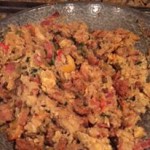 It has been said fried rice is basically taking rice and adding leftovers you already have. What type of leftovers? Vegetables and meat of course (you can exclude the meat and even the eggs if you prefer). This opens up a lot of variety when you decide to make it. I am including the standard recipe. But the picture of my last batch was made with red, yellow, and orange bell peppers, mushrooms, scallions and spinach. The meat selection was a request from my husband which for this batch not as low calorie as it could have been. The last time before this one I used shrimp which is of course low calorie but my husband asked me to try adding sausage this time around. And I also added turkey bacon. Depending on the size of the batch the amount of eggs you will use varies. My last batch I used 3.
It has been said fried rice is basically taking rice and adding leftovers you already have. What type of leftovers? Vegetables and meat of course (you can exclude the meat and even the eggs if you prefer). This opens up a lot of variety when you decide to make it. I am including the standard recipe. But the picture of my last batch was made with red, yellow, and orange bell peppers, mushrooms, scallions and spinach. The meat selection was a request from my husband which for this batch not as low calorie as it could have been. The last time before this one I used shrimp which is of course low calorie but my husband asked me to try adding sausage this time around. And I also added turkey bacon. Depending on the size of the batch the amount of eggs you will use varies. My last batch I used 3.
For Christmas my daughter bought me a Cuisinart food processor. This made breaking up the cauliflower a LOT easier. Before I had the processor trying to break up the cauliflower was really tough. Since posting this originally now stores like Trader Joes and Costco offer califlower aleady “grained” and Trader Joes has cauliflower pizza crust. It is so nice when store make being helth that much more convenient!
If you want to stick with the food processor I used the shredding blade and it broke up the cauliflower so it was granules like rice is. The first time I used the processor and the blade I used unfortunately broke up the cauliflower too much so the consistency was too mushy. It still tasted good but I knew it would have been better with the correct texture. My husband said he would like me to make the cauliflower fried rice every week. Those of you that are always trying to figure out what to make that will keep everyone in the family happy. This one does that. Both my kids say it tastes really good so I know I have a winner. I have made cauliflower pizza crust before but that was before the processor. The fact combined with the mistake of adding too many ingredients that were too “wet” made the pizza fall apart too much. After I try that recipe again I will let you know how it went. Both the cauliflower fried rice and cauliflower pizza are P3 friendly if the right additional ingredients are added. And it goes without saying the recipe is just plain HEALTHY without sacrificing taste. Along with the fact that the cauliflower is a good source of fiber as well.
Though standard fried rice usually has peas and carrots you are not stuck having to use carrots or peas. Both of those I prefer to not use. Carrots are high glycemic (sugar) and peas are starchy. There are so many other vegetables with a lot more benefits.
As far as oil I have used either olive oil, coconut oil or a Mediterranean blend oil. Sesame Oil is usually used but I don’t have that oil in my pantry. And to be perfectly honest I simply use 3 or 4 soy sauce packets that I got from Panda Express. I am notorious for not follow a recipe precisely. But the outcome is yummy and that’s what counts.
Here is the Basic Cauliflower Fried Rice Recipe
- 1 Small Head of Cauliflower, cut into Florets
- 3 Slices Bacon, Diced
- 2 Large Eggs
- 2 Scallions, Sliced Thin
- 3 Tbsp. Oil
- Diced Meat of your choice
- Veggies of your choice
- 1 Tbsp. Soy Sauce
- 1 tsp. Freshly Ground Black Pepper
- 1 tsp. Minced Garlic
- Rice cauliflower florets in food processor or use pre-grained from a store I mentioned above
2. Dice bacon and scallions.
3. Fry bacon until very crisp, remove and let cool.
4. Add oil to pan and start to fry the cauliflower.
5. After a few minutes, push your cauliflower to one side of the pan, adding your garlic and scallions to the empty side.
6. Add soy sauce black pepper and a slight bit of sea salt (to taste) to the “rice”.
7. Mix everything together and allow it to fry for a few minutes.
8. Push all your ingredients to one side of the pan again. Add your whisked eggs and allow them to cook.
8. Add your bacon and mix everything in well, chopping the egg up to form smaller pieces.
HCG – How to Begin Phase 3
How to Have a Successful Phase 3
Questions – I am so scared, I start Phase 3 tomorrow. I’ve done my 3 days without HCG. I’ve been reading and checking out different recipes for this phase.
How do I figure the amount of protein to eat? Someone said just double the amount that I’ve been eating. I want to make sure that I get the correct amount. I know I have to start slowly introducing foods. Is 1500 calories the minimum daily caloric intake or do I start by 1st week: 800, then go to 1000 on the 2nd week, then go to the full amount of calories 1400/1500? How much fruit do I eat per day?
My Answer:
The very first Phase 3 can be intimidating!
My first Phase 3 went very wrong because I got too caught up in wanting to try all the great recipes I saw people making on Phase 3.
On my very first day I added so many different foods that those on Phase 3 had been talking about. Open face tuna sandwich using Ezekiel bread with cheddar cheese, I baked a phase 3 friendly cookie recipe. It has been so long now since that time it is hard to remember what else I slammed my poor body with.
So what I found out the hard way about Phase 3 is this….Don’t slam your system with everything at once even if it says it is P3 friendly.
Doubling the protein is fine, especially if your body type craves protein.
Just go very SLOW with adding back in the starches and sugars. I can not emphasis this enough. Journal as you add so you can pinpoint if there is a food that you are sensitive to at first. Go easy on everything you reintroduce and keep tabs on what you are adding and what activity you are doing..
Think Low Glycemic:
When it comes to fruit (at first), I’d say 2 maybe 3 servings the first day and see how your body responded.
I admit I have never counted calories just what types of food I eat and my activity level. Then I figure out between the two what the outcome will be. As long as you go slow and stick with healthy choices you are on the right track.
And for now be cautious with anything bread or pasta like. Example – If it makes you feel full (bloated) or lethargic.
I say “for now” because I don’t want you to think the foods I say to use caution with is a “never”.
But I can’t stress enough how slow introduction will help lock in your effort so you can keep the new you and enjoy what you choose to eat in the future.
If you feel better with counting calories – go for it. The plan you laid out looks like a pretty good one as long as you keep tabs on what you take in and how your body reacts so you can adjust accordingly
Easy does it – That’s my motto!
Good Habits Before, During and After HCG
HCG Phase One “Do List”
My Experience 😉
After going over the entire list I realized just how overwhelming it all is.
So I would rather comment on what I did and why.
Not that some of the other Do’s aren’t good too. I simply want to help keep it manageable and within reason. Plus I can share my experience firsthand.
I also want to be clear that I did not make a point to do or consume what is on this “Do List” the 30 days prior to starting my HCG journey. Most of them I found out about their benefits throughout my journey.
Phase One Do List that I have experience with;
Do’s – That I Do and Have Done:
-
Drink Water
Stay Hydrated and when you are burning fat you need water to help flush it out – Benefits of Water
My choice is Alkaline Water:
-
Add Fiber
Keep your intestine swept out!
-
Walk
Good Circulation equals all kinds of health benefits.
-
Get Sleep
Lack of sleep causes stress on the body. Stress is not a good thing for weight loss and a lot of other things.
Have trouble falling asleep??
-
Get Sun
Good Day Sunshine! Keep your vitamin D level UP…Can’t get outside or live in a very rainy,cloudy place?
Take a vitamin D supplement!
-
Breathe Properly
Most of us are shallow breathers –Oxygen is KEY!
Is is easy to get into a habit of shallow breathing. That is why we many times lack energy and get that late afternoon lethargic feeling.When you start to feel that way while let’s say when you are at work sitting at your desk.
Try this ; To bring large quantities of oxygen into your body – Breath in taking in as much air as you can and allow it to fill your diaphragm.Hold that breathe for a moment, tighten your abdominal muscles, and exhale through your mouth as if blowing up a balloon.
I know when I do this I feel refreshed!
Extra Virgin Coconut Oil
For cooking (I use MCT Oil too) See my other post for the tons of MCT Benefits
-
Colon Cleanse
Here is an easy affordable Cleanse – Cleansing
Or Go the Pre-packaged choice
-
Eat Grapefruit/Apples
Low Glycemic, good fiber .Apples are a natural diuretic.
Both cleanse the liver, gallbladder and colon glycemic-index benefits
-
Use Organic Apple Cider Vinegar
-
Drink Green Tea/Wu long tea
Helps regulate hunger, stimulates cleansing of the cells, helps metabolism
-
Drink Organic Yerba Mate Tea
Yerba Mate Tea-One cup a day. Increase energy, reduce appetite and stimulates releasing of fat cells.
-
Eat Hot Peppers
I put cayenne pepper in my Cali kicker and I like to eat pepperoncini peppers- Increase Metabolism and reduce appetite. Helps release fat ,stress and reset body set point
Use Natural Sweeteners
-
Use Cinnamon
Helps regulate insulin and blood sugar, normalizes appetite and helps the body release fat.
I love baking an apple with cinnamon and stevia – YUM!
Just want Cinnamon is a capsule click image below. =)
-
Limit Carbonated Drinks
You have to watch out for sodium and let’s face it very hard to find one with Stevia but there is Zevia All Natural Soda and it really taste great!
-
Take Digestive Enzymes
Gotta love a well working system!
-
For those of you that are still curious about the other Do’s and what are the Don’ts I will be sure and post that next.
After that I want to share a couple of good questions I was asked after doing my recent vlog on You tube
How To Maintain Your Weight After Dieting
I’ve Lost the Weight – How Do I Keep it Off?
Question – I’m in P4, but find I’m gain back slowly. I’m up 10 lbs in about 4 weeks. What should I do?
Answer –
OK – As I write bear in mind I am talking to myself as well.
Here are a few thinks you want to ask yourself. Did you tend to shy away from the scale for too many days? Did you keep a journal so if there was a food that didn’t work out for you it would be easier to pinpoint what you would need to be more careful with?
Have there been stressful situations in your life that made it more difficult to make good food choices? Is 4 weeks been how long you have been on P4 or were you doing pretty good then this began to happen?
Re-reading your question it sounds like you were doing good and it has been the last 4 weeks that has caused issues. Try to think back on what could have changed from when you were holding steady with your new weight. Personally for me all was great then in Feb 2012 I was slammed with one situation after another that mentally triggered me to throw my hands up in the air so to speak. We all have “things” and set backs. It is how we dust ourselves off to move forward that defines us. You and I both can turn a situation around. Basically long story short depending on your answers to the questions I put out there. If you sum up that it is due to a few too many choices or habits slipping through the cracks as long as you identify them and adjust you will be back on track. If you feel getting stricter with yourself for a few days to regain mental strength and confidence in the power you have in your heart and soul you could choose to do the Mac nut fast or fruit flush or simply eat really clean – lean protein and low glycemic fruit and veggies.
You my dear worked too hard to get your heath, body and mind where you want it to be to let anything defeat you now!
HCG – Thinking About Trying It But Have Questions
HCG Questions – My Experience with Protocol, Exercise, Stabilizing and Food.
Message sent to me;
-Hey. I’ve been thinking about doing the hCg program, but I am a little skeptical based on all the controversy that seems to surround it. It makes it hard to make a decision. Anyway, after searching on you tube, your videos have been the most beneficial and interesting to watch. 🙂 Congratulations on all of your success. 🙂 I have a few questions I was hoping you could answer, if you have time.
Q – 1. Have you noticed any unhealthy side effects since (or even during) performing the hCg protocol? A lot of the information I have read through tries to claim that the hCg protocol will help you lose weight but in the long run you are playing a dangerous game with your life (i.e. heart problems, cancer, etc.). Should I worry about any of this? Are these claims potentially true?
My Answer – Before protocol my Dr had me on Advair for my breathing, Nexium for heartburn, and my cholesterol was lousy but not to the point of medication yet. I also had been hospitalized with a blood clot the summer of 2008. I felt that I was too young to be suffering all those ailments.
After seeing family that summer I made the decision to be semi vegetarian. Felt a bit better but not any huge difference. Then I did a long master cleanse fast. Because I really push the envelope as far as how long I did the fast I did experience some scary hair loss. But my breathing and heartburn got better. In 2009 I did end up with another blood clot.
My brother was concerned about me fasting and mentioned I should look into “this 500 calories diet on youtube”. I started watching the vlogs and Dec.2009 ordered my HCG and started my journey Jan 17, 2010.
Before starting I read Pounds and inches over and over again so I wouldn’t miss a single thing. Based on what I read of Dr Simenon’s protocol it made a lot of sense and I was excited to think that this really could be what would work for me.
Q-2. Some of the research I have read through claims that hCg can create acne problems. Is this true? Did you have this come up when you were on the protocol? If you did, how did you get it to go away? Did it just disappear after completing the protocol (you seem to have beautiful skin)?
My Answer – Because hcg is what helps pregnant women nourish the baby even if they aren’t eating enough this is my thinking on the changes it might make to our bodies while on it. Example, I knew when I was pregnant my hair grew great and fast but when I was done being pregnant my hair stopped growing as fast and lots the extra thickness I gained while pregnant. So I figured I might possibly go through the same scenario once I was done with HCG but that has NOT been the case. Granted I have taken a good hair vitamin before, during and after hcg. The most recent vitamin I have been taking for my hair has definitely increased my hair growth more that the others I have been on. Things like acne etc. again I thing it depends on each individual and how hormonal changes effected a person in the past during child bearing years.
As a side note I should also mention my cholesterol levels are now ideal – YAY!
Q – 3. What is it like trying to maintain your weight loss now? I’m sure you don’t eat poorly to stay as trim/fit as you are. So, I was wondering what your diet and exercise was like to stay as fit as you do? Do you always cook at home? Do you go out to dinner? Do you exercise? If so, how much?
My Answer –
One “beef” I have about the show “The Biggest Loser” is this, the trainers have the participants working out so hard and so much how on earth could a person living an average life keep that kind of regimen up?
I don’t have a gym membership but I do have treadmill. If I didn’t have that I know I could still go outside and walk. Other than that I do light weights to firm my arms.
I like to walk on a daily basis to keep my circulation going. The light arm weights are approx 3x per week.
I was going to experiment with the peak 8 theory but got a cold and didn’t get back to doing it. But just writing this is reminding me that I should.
Even before HCG I understood but just didn’t put into practice the importance of the glycemic index. My Grandmother was a double amputee because of wounds not healing because of diabetes. That right there was a motivation to understand what sugar does to our bodies.
Yes I do eat out (approx 2x a week) but I don’t like to go to fast food places (too many chemicals). I love cobb salads but ask for no bacon (never have been a fan) and since 200 calories can be saved by just omitting that I’m all for it. I do love blue cheese dressing but just don’t have it a lot. When I’m at home I really enjoy the mustard dressing I vlogged about so that is the one I eat during the week. I also love roasted veggies with either shrimp or chicken mixed in.
If I do eat sugar foods that aren’t fruit like almond Joy or ice cream I plan it around knowing I will be active afterward. If I’m not for one I feel too antsy and second I don’t want the sugar to store as fat.
I still love Mexican food, burgers etc. I just do it all within reason. During the week between my 2 jobs and helping other dieters I figure I will save my spurges for the weekends. Plus during the week the “clean foods” I eat I really crave and look forward to.
Also I don’t like to “mindlessly eat” so that good too. But if I need to take something with me when I’m on the go I love raw almonds, grapes, that kind of thing.
Q – 4. Without hCg, they say that a 500 calorie diet is terrible for you and you will quickly put back on the weight once you go back to a normal intake of calories. In addition, your body will store more in fat than it did previously in case of another low calorie (starvation) mode. However, what I have read with the hCg protocol, is that it resets your metabolism and therefore if you do gain weight subsequent to the protocol, you are no worse off than when you started the protocol (i.e. there is no surge in weight gain due tot he lack of calories). Is this true?
My Answer – I heard the same theory you mentioned when people talk about extremely low calorie dieting. Yes HCG is what makes the 500 calories intake doable without starvation. As far as I’m concerned it isn’t just about resetting metabolism but also creating a new “set point”. As you stabilize your body is getting use to the new weight each and everyday so it will want to stay at the new set point. So the longer you are at the lower weight the easier it is for your body to expect that to be the norm.
The person who asked the questions – That is all for now. I apologize for the list of questions. I was never very good at condensing what I wanted to say! 😉 Even if you end up not being able to reply, I think you should know your videos are very beneficial and inspiring. Thanks for posting! 🙂
ME – Please remember I am not a doctor etc. My answers are simply my opinion based on what I have experienced before, during and after taking HCG.
My goal is to help people through what I have learned during my journey.
HCG Recipes – Know Your Sugar Substitutes
Making HCG Chocolate Recipes with Xylitol or other Sugar Substitutes
Stevia
Best Healthy Sugar Alternative
Though it is 200-300 times sweeter than table sugar, stevia is not a sugar. Unlike other popular sweeteners, it has a glycemic index rating of less than 1 and therefore does not feed candida (yeast) or cause any of the numerous other problems associated with sugar consumption. Read more about stevia at Organic Lifestyle Magazine (OLM). Please note that Stevia and Truvia are not the same thing.
Xylitol
Xylitol is a natural sugar alcohol sweetener found in the fibers of fruits and vegetables which can cause bloating, diarrhea, and flatulence with initial consumption. It’s said to be safe for pregnant women, and is said to possibly treat ear infections, osteoposis, respiratory infections, candida, and is it even helps fight cavities. In fact, in Finland, virtually all chewing gum is sweetened with xylitol.
Agave Nectar
A sweet syrup made from the Blue Agave plant, Agave Nectar is obtained by the extraction and purification of “sap” from the agave plant, which is broken down by natural enzymes into the monosaccharides (simple sugars): mainly fructose (70-75%) and dextrose (20-26%). Read more about agave nectar at OLM.
Fructose
Though fructose has a low glycemic index rating, fructose consumption should be limited. Fructose is linked to heart disease as it raises triglycerides and cholesterol. It is devoid of nutrition.
Brown Rice Syrup
Though it is said to have a low glycemic index (25), it is not recommended for diabetics, since its sweetness comes from maltose, which is known to cause spikes in blood sugar.
Raw Honey
A Healthy Sugar Alternative in moderation
With antioxidants, minerals, vitamins, amino acids, enzymes, carbohydrates, and phytonutrients, raw, unprocessed honey is considered a superfood by many alternative health care practitioners and a remedy for many health ailments. Choose your honey wisely. There is nothing beneficial about processed honey. Read more about honey at OLM.
Coconut Palm Sugar
Originally made from the sugary sap of the Palmyra palm , the date palm or sugar date palm (Phoenix sylvestris). It’s also made from the sap of coconut palms. With a relatively low glycemic index, Cocnut palm sugar is the new rage among health nuts. It’s often called “coconut nectar sugar” or “coconut sugar”.
Apple Juice
Fresh apple juice is good for you, though we recommend eating fresh raw whole apples. Concentrated apple juice (sometimes used as a sweetener) is closer to refined sugar than fresh apple juice.
Barley Malt Syrup
Barley Malt Syrup is considered to be one of the healthiest sweeteners in the natural food industry. Barley malt is made by soaking and sprouting barley to make malt, then combining it with more barley and cooking this mixture until the starch is converted to sugar. The mash is then strained and cooked down to syrup or dried into powder.
Amasake
This is an ancient, Oriental whole grain sweetener made from cultured brown rice. It has a thick, pudding-like consistency. It’s not easy to find in the U.S., but it is a great alternative to refined table sugar.
Sugar Cane Juice
Healthy Sugar Alternative in moderation
Sugar cane juice has many nutrients and other beneficial properties and is said by some health practitioners to be almost as medicinal as raw honey.
Organic Sugar
Organic sugar comes from sugar cane grown without the use of chemicals or pesticides. It is usually darker than traditional white sugar because it contains some molasses. (It has not been processed to the degree white sugar is processed).
Maple Syrup
Maple syrup is made by boiling sap collected from natural growth maple trees during March & April. It is refined sap and is therefore processed. It has a high glycemic index, and though it is much more nutritious then refined table sugar and high fructose corn syrup, there are better choices.
Evaporated Cane Juice
Evaporated cane juice is often considered unrefined sugar, but juicing is a refining process, and evaporating refines further. Though better than turbinado, cane juice (unevaporated) is a better choice as a sweetener.
Black Strap Molasses
White refined table sugar is sugar cane with all the nutrition taken out. Black strap molasses is all of that nutrition that was taken away. A quality organic (must be organic!) molasses provides iron, calcium, copper, magnesium, phosphorus, potassium and zinc, and is alkalizing to the body.
Turbinado
Turbinado sugar is partially processed sugar, also called raw sugar.
Raw sugar
Raw sugar is not actually raw sugar. It is processed, though not as refined as common white table sugar. Therefore, given a choice between raw and white, choose raw. There are many different variations of raw sugar with many different names depending on how refined it is.
Cola (and most other sodas)
Though cola has a lower GI ranking then some might expect, there are many other reasons to avoid cola, or any type of soda. There is nothing beneficial to the human body inside a can of soda (not to mention we should avoid drinking out of aluminum cans!).
Alternatine:
Corn Syrup
Corn syrup has very little nutrition and should be avoided.
My how we have evolved with food awareness. My dad would put peanut butter and karo syrup on top of his pancake. Yikes…Sugar,Fat and Carb loaded can you get?
Refined, Pasteurized Honey
The nutrition is gone, and there is often high fructose corn syrup added to processed honey. Refined pasteurized honey is no better than white table sugar.
Refined Table Sugar
Conventionally grown, chemically processed, and striped of all beneficial properties, many health advocates believe that refined sugar is one of the two leading causes (high fructose corn syrup is the other) of nearly every health ailment known to man (or woman or child). Not only does it have a high GI ranking, but it also is extremely acidic to the body causing calcium and other mineral depletion from bones and organs (sugar is alkaline but has a very acidic effect on the body).
High Fructose Corn Syrup
Many health advocates believe that high fructose corn syrup and refined sugar are the two biggest contributors to health ailments in our society. High fructose corn syrup is a combination of sucrose and fructose.
Glucose (AKA Dextrose)
White bread was the benchmark, but for consistency glucose now holds the rating at 100.
This Last One
In my opinion – If you want to lose fat or keep the fat off avoid this one like the plague!
(sounds simple but a lot of prepackaged food have it)
Maltodextrin
Foods that have maltodextrin often say “Low Sugar” or “Complex Carbohydrate”, but this sweetener should be avoided!
Thank you Lara for your help with this post 😉
Now a FUN way to end this post!
HCG Recipe – Baked Apple With a Great Side Benefit!
HCG Recipe for P2 – Baked Apple With Benefits Cinnamon Has!
Slice up one apple (I leave the peel on the apple)
Sprinkle Stevia and Cinnamon to taste (I go somewhat heavy on the cinnamon because of the benefits you will see below)
If I’m going to use the microwave to heat them I also add a squirt of water which creates a yummy sauce.
cook for 2 minutes
If I do actually bake them in the oven I drizzle water over them and bake at 350 degrees. I take them out when the fork inserts easily into the apple slice.
When I am on P2 the 2 fruits I prefer to stick with are Apples and Strawberries because they are both Low Glycemic.
Why eat the apple baked instead of always raw ?
First reason VARIETY second reason is explained below;
Here are some other benefits of Cinnamon:
* controls blood sugar levels
* helps maintain insulin sensitivity
* a VERY powerful antioxidant
* may have antibacterial and antifungal properties
* and dozens of other benefits
Although cinnamon does NOT directly increase fat burning (such as by increasing metabolic rate, etc), it CAN actually help you to lose abdominal fat and get leaner.
Here’s how…
Although cinnamon has dozens of health benefits, the main benefit that will help you to get leaner is through it’s strong effect on controlling blood sugar levels in your body.
In a study published in 2003 in the medical journal Diabetes Care, groups were split into people taking 1, 3, or 6 grams of cinnamon per day in capsule form (the equivalent of approx 1/4th to 1 teaspoon of cinnamon).
The results of the study showed that all 3 amounts of cinnamon reduced fasting blood glucose levels by 18-29% after 40 days.
Cinnamon can also increase insulin sensitivity, which essentially means that it is helping your body to control blood sugar while simultaneously allowing your body to produce less insulin.
As you know, chronically high insulin levels can make your body pack on fat.
If you just want to opt for the Cinnamon capsules many online and local stores offer them.
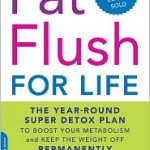


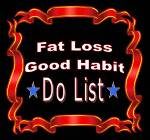
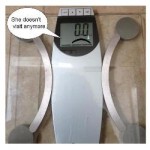
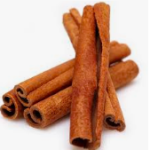
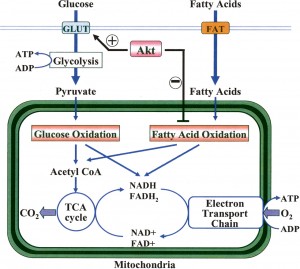

Recent Comments